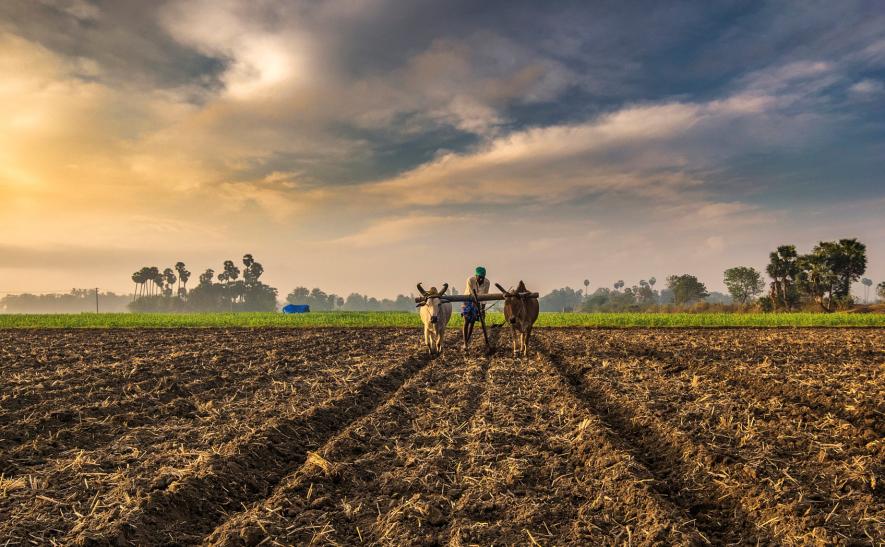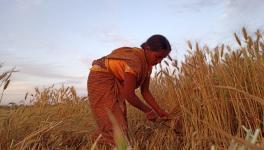Decoding FM’s agri-stimulus: Lock, Stock and Two Smoking Tranches

Image for representational use only.
With the Rs. 8.4 lakh crore agri-stimulus, the finance minister has enforced an economic Green Revolution whose pillars are credit, stocking up and opening the “farm-gate” for business. Tersely put, two tranches strengthen rural banking networks, provide additional loans and expedite the “doubling farmers incomes” program. The report appears to be the lodestar for the fin-min's presentation, which includes suggestions on farm-gate infrastructure, a deregulated APMC and even linkage of farmers to agribusiness directly or through contract farming, etc.
The Niti Aayog’s chief, Rajiv Kumar, even termed the Essential Commodities Act as a “hindrance”, and called for its removal back in 2017. As stocking limits, restrictions and various food items are removed from its purview, the EC Act is vestigial and it is hunting season in agribusiness. So all is going as per the pre-Corona agenda, new steps include additional funds to galvanise Niti Aayog’s vision and Prime Minister Narendra Modi’s announcement of a new “property card” through which “every property in the village can used as collateral”.
So very swiftly the government has linked up farmers and their lands to banking institutions, allowing more credit to flow into rural India, a similar policy as was seen in the post-World War 2 United States. A small hiccup: the government is still unsure about India’s farmer-count, are there nine crore farmers or 14.5 crore? How many destitute farmers are connected to the rural banking system? For our tax rupees may artificially boost a certain class, and risk financially depressing marginal farmers. But that aside, can flooding low-interest loans for farmers and infrastructure and market liberalisation uplift our enervated rural sector? Maybe the United States has an answer.
In pre-WW-2 United States, farming was the largest occupation. Overwhelmingly, small and medium family farms dominated the country, limited by the labour and capital of farmers. The farm incomes were also very low. After a slight spike during WW-2 was over, farms in America boomeranged back to overproduction and “low income compared to costs”. Sounds familiar?
As liberalisation brought “reforms”, the United States was quick to enact the Farmers Home Administration (FmHA) Act and Disaster Loan Act of 1949 to insure loans and to make direct loans using government funds to farmers and also provide the emergency crop and feed loan program. Investments in rural infrastructure and easy loans were encouraged—very similar to the post-corona economic policy being followed in India right now—and a new Agricultural Marketing Act, 1946, was introduce to promote industry and an “open market”.
Given the extra cash flow, stressed farmers were quick to buy more land, farm equipment and modernise. In fact, for some years, the yearly land inflation price overtook bank investments. Overall, business was good, but this ascent was artificially sustained through lax fiscal manipulation. Speculation was high and credit was being used to refinance other mortgages. This caused a financial crash.
The result—between 1950 and 1970, real farm income decreased from 18 billion in 1950 to 13 billion in 1971. The number of farms also decreased by 50%, but the income per farm rose by 46% against the national average of 76%. Total mortgage debt on American farms rose from 8 billion in 1950 to 24 billion in 1971. “So either,” in Secretary Earl Butz style, “you got big” and doubled your income “or got out” of farming. Is India also aiming to double farmers’ incomes in a similar way?
Well one swallow does not a summer make, but consider this: the United States’ Committee on Economic Development (CED) in ‘An Adaptive Program for Agriculture of 1962’ and the ‘Doubling Farmers’ Incomes’ report of 2017 mirror each other. Not just on their desire for “shifting cultivators out of farm to non-farm activities” (as too many farmers are the problem) but also on all other parameters. After the implementation of ‘An Adaptive Program’ in the United States, over 1 million small-medium family size farms were lost. Farmer suicides, along with foreclosures of small and medium farms, sky-rocketed, as most farmers were unable to pay back their loans. Meanwhile, under the shadows, a class of agricultural elite such as Cargill but also many others, grew.
Indian farmers are already in deep depression and vociferously asking for loan waivers. As a NABARD study points out, 52.5% rural households had a debt of $1,470 (over Rs. 1.11 lakh) each in 2018. Compare this to the average monthly rural household surplus of Rs. 1,413. Providing them more credit, (yes, more loan schemes are to follow), will lock farmers and the entire rural economy into a debt spiral. If we throw in contract farming, agri-commodity trading and agribusiness, Indian farmers will have no other hope than to be hired hands at their own farms, like seen in the US.
Chasing the American farm dream
History has a strange way of repeating herself. The opening of “farm-gate” and dismantling of the APMC has opened the doors of agribusiness to Indian farms. The farmers in the United States are at the end of this tunnel, where the Indian government aspires to take us. In Merchants of Grain, Dan Morgan describes this journey of “market access for farmers” and how it led to the the consolidation of elevator shafts and storage, and other mechanical technologies by giant companies. This was followed by the takeover of farmers’ cooperatives by them, thus culminating into a new grain monopoly in the United States which could eventually control 70% of the world’s supply-chain. Over time it became impossible to be a farmer who grows a crop or rears animals or crops without a company contract. Farmers in America have no market left but the corporate markets.
In Bihar, in 2006, the government revoked the APMC Act in order to woo private investment, but what happened is shocking. Crime became decriminalised and farmers received even lower prices for their produce. Meanwhile, “traders” carted truckloads of produce to APMC mandis all the way in Punjab and Haryana to sell at the minimum support prices. And the private investors never came either.
The human cost of “liberalisation” of the “farm gate” has been huge. Violence, drug abuse, and insanity all now encircle the American rural towns all along its “dust bowl”. In Harvest of Rage, Joel Dyer connects the dots between post-War reforms and the current dismal state of American farmers, and the home-grown militia movements that led ultimately to the Oklahoma City bombing in 1995, which led the country to today, and Trump.
The United States’ farm debt in 2020 stands at $425 billion, yet mostly large and company farms get benefits of the relief package it announced. In the meantime, many more thousand American farmers will be goaded out of farming again. What started out in the post-War era as a liberal reform has completely changed American agriculture to become a farming system with minimal farmers.
Currently, India is trying to walk the same line. As an American play-book is applied to the Indian crisis, how soon before artificial fiscal measures fail, debt quadruples and foreclosures become the norm? As we come out of the war against Covid-19, hoping for a New Deal, the government is only repackaging its agenda and opting for a few agri-dollars more.
The author writes about agriculture and the economy. The views are personal.
Get the latest reports & analysis with people's perspective on Protests, movements & deep analytical videos, discussions of the current affairs in your Telegram app. Subscribe to NewsClick's Telegram channel & get Real-Time updates on stories, as they get published on our website.
























